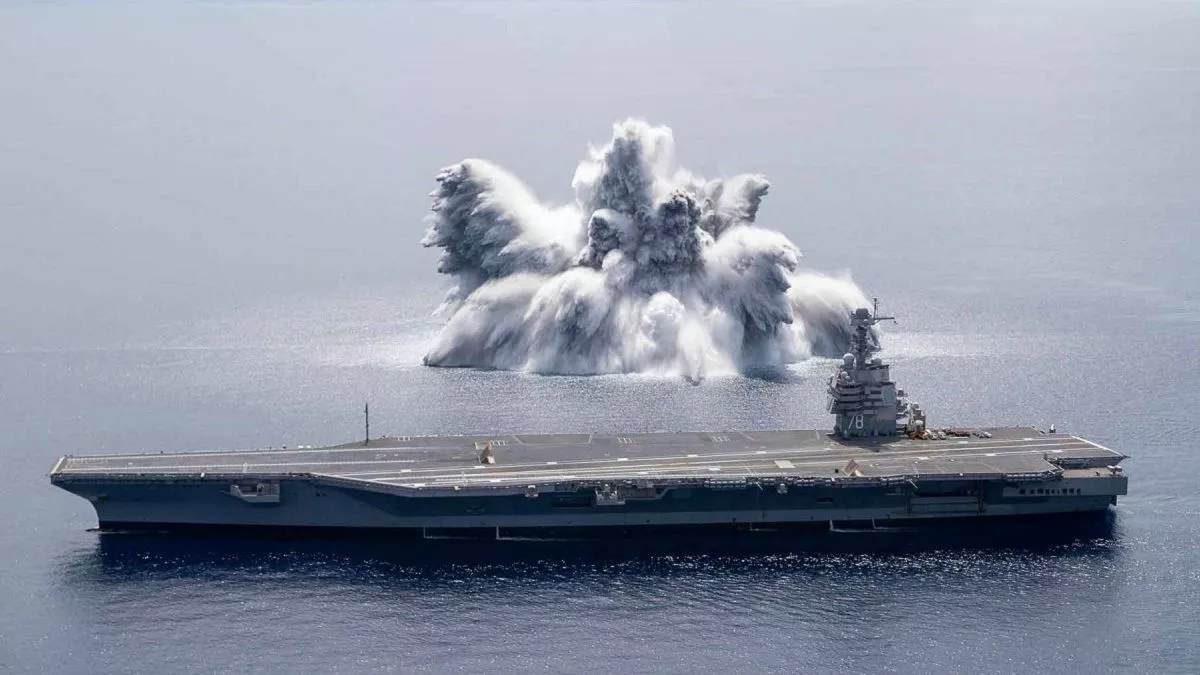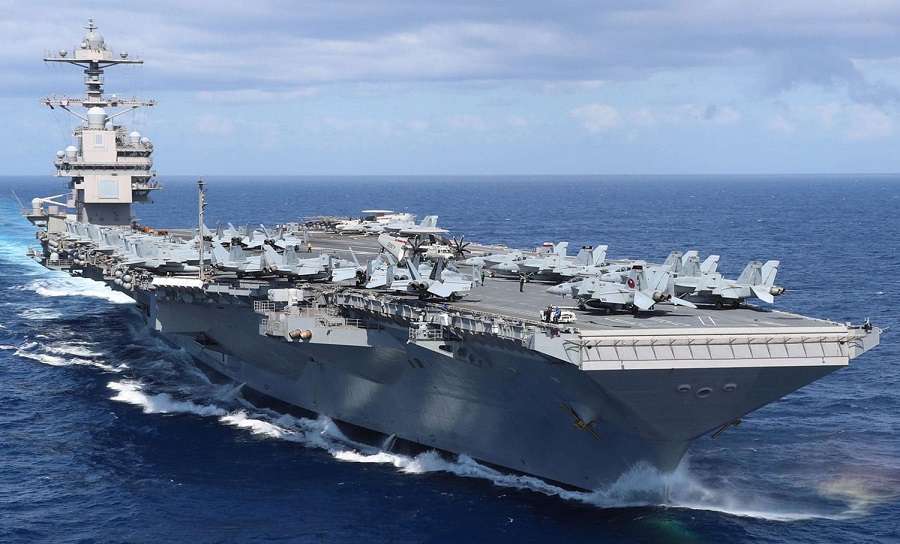Explosion In The Ocean: How The U.S. Navy Tests Aircraft Carrier Endurance

If there’s anything that speaks volumes about a nation’s military strength, it’s the number of aircraft carriers it boasts. The most powerful countries in the world, including the U.S., Russia, and China, have several aircraft carriers at their disposal. As a result, they also have a significant standing on the global stage.
Aerial combat, probably the most dangerous facet of war, is only limited by the range within which it can operate. This is where aircraft carriers come into play. Basically, these huge ships are mobile airbases that grant the ability to launch an air assault from anywhere across the water bodies, which constitute 71% of the Earth’s surface.
Given its importance, an aircraft carrier goes through a series of tests before setting sail officially. One such test is the shock trial, glimpses of which are shown in the video below.
What is an aircraft carrier shock trial?
Shock trials are a series of ship tests that check a vessel’s perseverance against underwater bomb detonations. They simulate a real-life explosion near a ship — in this case, an aircraft carrier — to gauge its impact on it.
Interestingly, the U.S. Navy recently conducted a shock trial of its most potent aircraft carrier, the USS Gerald R. Ford. The vessel, which is named after the 38th U.S. President, successfully passed a barrage of a combined 40,000lbs (or 18,143kg) of explosives.

Aircraft carrier shock trials don’t just check the endurance of the ship but also its embedded systems that are crucial for the functioning of the airbase. Therefore, to successfully pass the test, the carrier must be able to perform a sequence of “detect, track, and engage” after each explosion.
By the way, do you agree that an aircraft carrier plays a pivotal role in times of war? Sound off in the comments below. While you’re here, make sure to check out this oceanic research platform that resembles a sinking ship.






